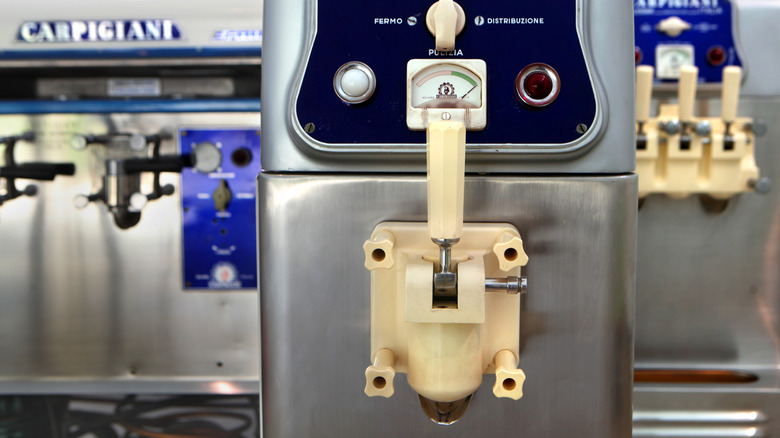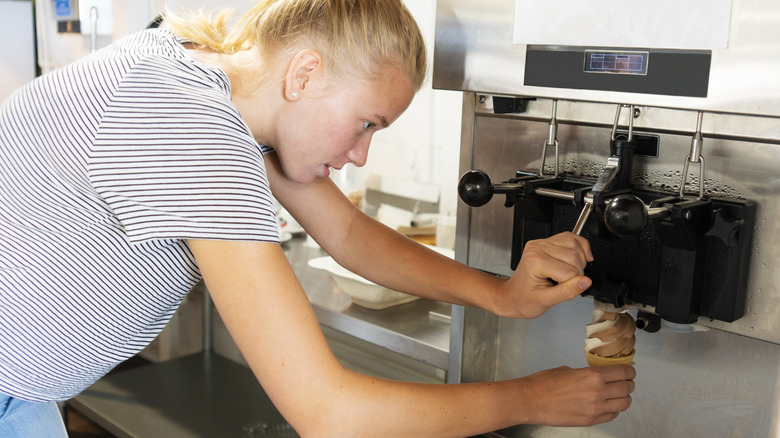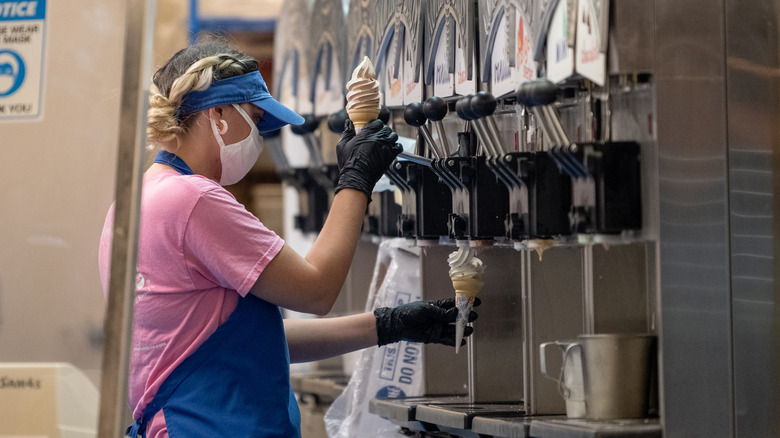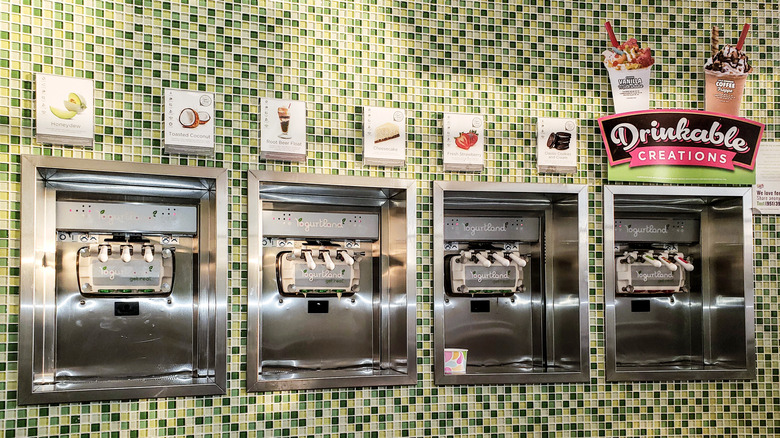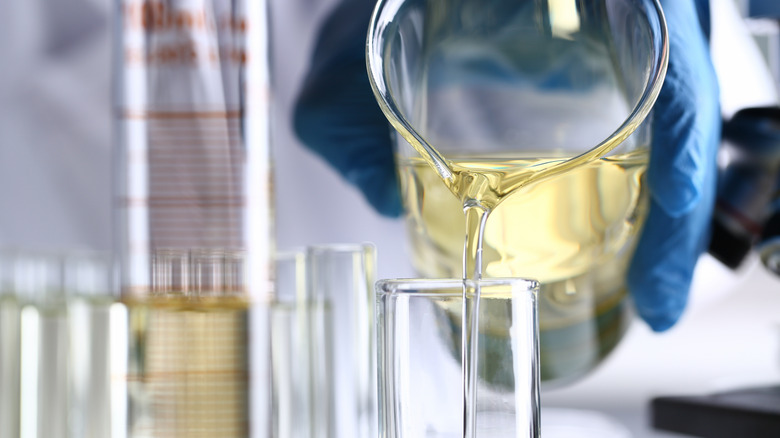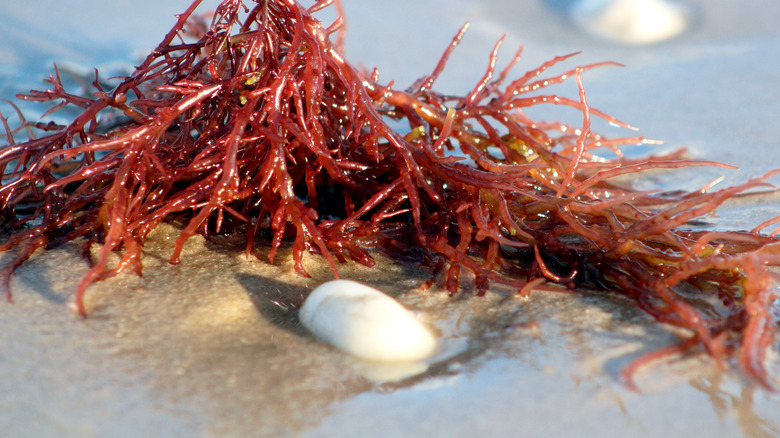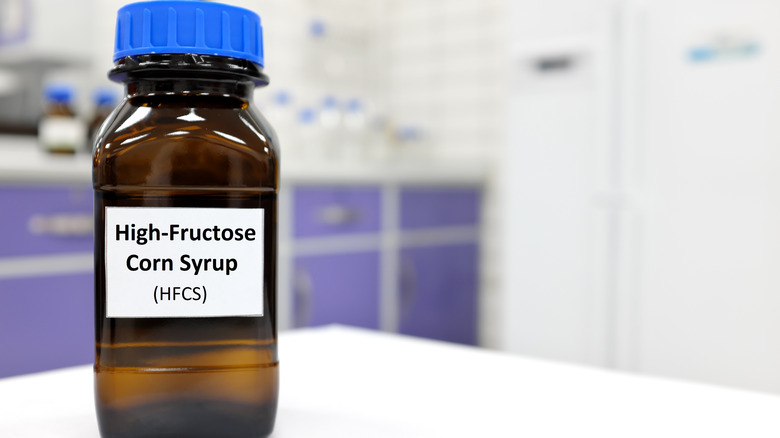Why You Should Avoid Soft Serve At All Costs
The deeper you delve into the problems with soft-serve ice cream, the more hesitant you will probably be to choose it as a dessert. There are some risks related to the cleanliness of the machines that produce soft serve as well as the temperature of the mix during shipping, storage, and mixing. The pathogens that can lurk on or in the machines — like listeria and E. coli — may cause food poisoning, or could even be deadly for people with certain health risks.
Soft serve contains a lot of additives to keep the ingredients combined and texturally pleasing. While some are relatively harmless, others can pose certain dangers — so you may want to think about putting them in your body, especially if you develop a regular soft-serve habit. Once you realize the potential hazards of eating soft serve, you may think twice about ordering any ever again.
Pathogens can easily grow in soft serve ice cream
If pathogens do contaminate the soft-serve mix, the good news is that some may die during the freezing process. Unfortunately, the freezing process doesn't always kill off bacteria. It just keeps them from growing. For example, listeria doesn't die when you freeze it, so if soft serve mix becomes contaminated with listeria, it can continue to multiply when it's as cold as 29 degrees Fahrenheit.
Even if the soft serve mix starts out pasteurized or the machine is cleaned daily, pathogens can accumulate from anyone who handles the mix or even from the machine itself. In one case in Washington, listeria stuck around in a soft ice cream machine for a year. While listeria outbreaks related to soft-serve ice cream are rare, they still happen. When the Toronto Star randomly tested soft-serve ice cream across Toronto, it found coliform in several samples, including from machines restaurants were diligent to clean and sanitize daily. Norovirus (the leading cause of food-borne-bacteria-related illnesses in the U.S.) can show up in soft serve, and other microbes including E. coli and Staphylococcus. Salmonella can also be a problem if the mix contains eggs, like soft serve custard.
Listeria in soft serve can be a big problem for several categories of people
Listeria is the foodborne bacteria that is the third most likely to cause death in the U.S., and it keeps popping up in soft serve. Only 16% of people who get sick from listeria each year die. However, there are a few categories of people who are more likely to become sick from consuming listeria in their soft serve. Anyone who is immunocompromised is at risk. It also is more likely to sicken people over age 65 and pregnant women. If you fall into any of these categories, eating soft serve is a much riskier venture.
In 2014 and 2015, two people in Washington with weakened immune systems fell sick in a medical facility after they drank milkshakes made from a contaminated soft serve mix that was later recalled. A year later, another immunocompromised person became sick after drinking a milkshake made from the same machine. The mix itself didn't have listeria in it, but samples of soft serve from the machine contained listeria with the same genetic markers as the listeria from the recalled mix from the year before. The machines had even been sanitized twice a week since then. Listeria can stick around for a long time, even in sanitized soft-serve machines. And if the machines aren't cleaned often enough, the amount of listeria can grow to dangerous levels.
Soft serve machines aren't always cleaned as often and as well as they should be
The presence of bacteria in a soft serve machine is a given. Every time a restaurant cleans and sanitizes its machines, it's killing off harmful bacteria that have begun to colonize. Once the bacteria count reaches 75,000 per gram or the mold or yeast count reaches 10 per gram, it's no longer considered safe. If there's too much time between machine cleanings or the cleanings aren't thorough enough, the microbes can multiply out of control.
For the safest soft serve, machines should be taken apart on a daily basis so that they can be cleaned and sanitized. However, if you've ever worked at a restaurant with a soft-serve machine, you probably don't remember this happening. After all, the process is a big undertaking, requiring employees to drain the remaining mix from the machine, rinse, and wash the tank and all its parts.
Then you have to let everything dry in a place where it won't be contaminated and resanitize all those parts for at least a minute before putting them back in the machine. After that, you have to run a sanitizing solution through the machine. During the whole process, you need to make sure to wear sanitary gloves and use sanitized cleaning cloths or brushes. Different machines have different cleaning requirements, so it's important for employees to be well-trained in the process outlined in the machine manual.
Employees don't always use safe practices around soft-serve machines
Even if the mix is fine and the machine has been cleaned thoroughly, contamination can occur when employees are not being safe. An employee who comes in to work sick or who has open sores can potentially infect the food they handle. Wearing bacteria-laden jewelry while filling or cleaning a machine comes with the risk of dropping it inside. An employee who washes and scrubs their hands for at least 20 seconds in hot water removes a lot of bacteria, and wearing sanitary gloves is an even better choice to prevent food contamination. Unfortunately, we've all seen food service employees put on a pair of gloves and use them to touch everything (including money) without changing gloves. So, any infected surfaces that even a gloved hand touches can cause cross-contamination with soft serve. Direct contact with the soft serve cone can be a problem, too, so never accept cones that haven't first been wrapped with a napkin.
With soft-serve machines being near other food prep areas and in the path of employees walking from one food prep area to another, there are plenty of contamination avenues. Any raw food or any open food or condiment containers near the machines are a potential source for bacterial transfer. Even having cleaning supplies or personal items like phones or keys near the machine could be a contamination source.
It's easy for soft serve mix to rise above a safe temperature
While freezing temperatures don't kill all bacteria, they do kill some. At the very least, freezing stops bacteria from multiplying to dangerous levels. So, not allowing soft serve mix to get too warm is essential for your safety. Unfortunately, the perfect temperature for soft serve is extremely narrow. The mix itself needs to stay at or below 40 degrees Fahrenheit, but it doesn't need to get cold enough to freeze while it's in the machine. Still, the mix needs to stay as close to freezing as possible or the product won't be soft.
There are a lot of opportunities for the soft serve mix to rise to 41 degrees Fahrenheit or above. It could get warm during the transportation process, from sitting around too long after delivery, while transferring out of the machine during the cleaning process, or while in the hopper. There's also a chance that the machine could simply malfunction and keep the mix at a lower temperature than it should.
Leftover soft serve mix can contaminate fresh soft serve mix
When some restaurants clean their machines, they remove the soft serve mix that is leftover at the end of the day and save it to return to the machine, returning pathogens that were there before the cleaning process. While this frugal practice might save money, it's one of the top ways bacteria end up overrunning soft serve. If a restaurant returns the leftovers to the hopper every day, it's essentially serving last week's or even last year's microbial mix today. It's essential that restaurants throw away any leftover mix at the end of the day before cleaning and sanitizing the machine.
A restaurant can minimize how much they end up throwing away by not adding as much new mix to the machine toward the end of the day or using the remaining mix in the machine to make products like ice cream cakes, ice cream sandwiches, or dipped ice cream bars that can stay safe in the freezer until purchase. If they do hold over some of the mix, choosing to add it to the machine during high-volume sales periods could minimize potential contamination.
If you get self-serve soft serve, everyone has touched the machine
If you eat in a restaurant like Golden Corral, Jason's Deli, or your local Chinese buffet, you're likely to encounter a self-serve soft-serve machine. When you think about every hand that has touched the machine and everyone who has walked by the machine with their food, you might want to think again about getting yourself some soft serve.
Imagine everything customers touch before they touch the handle of the soft serve machine: The door handle they pushed to get into the restaurant has an average of 8,643 bacteria per square inch, while the cell phone they couldn't put down while they ate has an average of 25,127 bacteria per square inch. So, those germs have the potential to transfer to the soft serve machine. While some germs don't last on surfaces long, others do and may even thrive in the right environment. A wet surface is the perfect environment for germs to multiply. Any hard surfaces like metal and hard plastic that don't have pores the bacteria can sink into have the potential to transfer even more bacteria particles to your hand. The common cold can stay contagious on hard surfaces for 24 hours, and the flu virus can stay contagious for 48 hours. Meanwhile, some robust coronaviruses can last on hard surfaces for up to 72 hours.
Eating soft serve can activate a lactose intolerance episode
If you're one of the 60% of people in the world who have problems digesting dairy after childhood, soft serve won't make you feel very good when you eat it. Some people find that soft serve is harder on them than some other dairy products. There are different amounts of lactose in different dairy products, including different types of soft serve. Ice cream and frozen yogurt tend to have somewhere between two and six grams of lactose. That's more lactose than cheese (which has around a gram) but less than milk (which has 12-13 grams). You may find that the amount of lactose in a specific brand of soft serve may activate your lactose intolerance more than others. For example, soft serve made with yogurt instead of milk will often have less lactose, so you may not feel as bad when you go to TCBY as you do when you go to Dairy Queen.
Side effects of lactose intolerance can include symptoms of digestive distress like nausea, painful gas, or even diarrhea. Then again, getting your lactose-laden soft serve with a side of bacteria from a dirty machine may also make you feel ill. Because food-borne illnesses also cause stomach distress, it can sometimes be difficult to determine if the soft serve is making you sick because it was produced under unsanitary conditions or because you're having a lactose intolerance episode.
Eating soft serve is not necessarily healthy
While there are some ways that soft serve can be healthier than hard-frozen ice cream, it's not a health food. All the air whipped into soft serve allows companies to sweeten it with less sugar and use less milk and milkfat than hard ice cream. And if you choose to eat soft-serve yogurt instead of soft-serve ice cream, you'll be acquiring good gut bacteria through your dessert. Plus, soft-serve yogurt can be easier to digest for people who are sensitive to lactose.
Whether soft serve has more or less fat or sugar than regular ice cream is relative to the comparison product. For example, the soft serve has more calories and sugar than the hard ice cream at Braum's. So, you can't just automatically assume that soft serve is going to be the healthiest choice; you have to check the nutrient content yourself to see if it's within acceptable parameters.
While soft serve doesn't tend to have all the mix-in ingredients that regular ice cream often has, it still tends to have a lot of added sugar. A small vanilla soft serve cone from McDonald's has 23 grams of sugar, one from Dairy Queen has 26 grams of sugar, and one from Braum's has 27 grams of sugar. Frozen yogurt isn't any better. Cherry Berry's alpine vanilla froyo has 24 grams of sugar without a cone.
Soft serve contains a variety of additives
If you thought soft serve was nothing but milk, cream, and sugar spun with air, we have bad news for you. The list of additives you'll find in soft serve is often quite long. Quite a lot of the additives help keep the main ingredients combined rather than separated into parts so that the texture remains smooth and creamy. These emulsifiers may include tetrasodium pyrophosphate, mono- and diglycerides, sodium phosphate, polysorbate 80, and guar gum. Maltodextrin keeps it from feeling grainy like sand on your tongue, which can happen especially if the machine is over-churning or under-churning the mix; if the product forms ice crystals from melting and re-freezing; or has too little fat in it. Ingredients like cellulose gum, carrageenan, and potassium phosphate help stabilize it, with the effect of thickening it or giving it the right mouth feel or flavor.
There's no need to worry about most of them, and guar gum may even provide some positive health effects. However, maltodextrin and polysorbate 80 may negatively affect your gut microbiome. Meanwhile, sodium phosphate and potassium phosphate both have the potential for being extremely bad for people with kidney disease. Carrageenan is another one to watch out for, since scientists are extremely worried about its possible side effects.
It often contains carrageenan
Carrageenan shows up in everything from ice cream and soft serve to coffee creamer these days. It comes from red seaweed, and it is an FDA-approved food additive, within strict specifications. Soft serve tends to contain less milk fat than regular ice cream (0.5% to 3% milk fat versus 10% milk fat). So, carrageen can help make it thicker and better-tasting. However, its true safety level in food has been debated among scientists.
Some of the possible side effects that scientists worry about with carrageenan include digestive distress. However, there's also a worry it could lead to more serious issues like irritable bowel disease or colon cancer. Studies have shown that a non-food-grade version of carrageenan called poligeenan causes ulcers and cancer in animals. Poligeenan is actually produced when carrageenan is mixed with certain acids. So, scientists worry that, when carrageenan mixes with stomach acids, it might degrade into something like poligeenan in the human stomach.
A 2017 journal article in Frontiers in Pediatrics discusses the fact that carrageenan changes the gut microbiome, causes inflammation, and promotes irritable bowel disease in research animals. While the same types of studies are not considered ethical for humans, studies of the human gut microbiome of people consuming carrageenan seem to indicate that the same thing happens within humans, so consume it at your own risk.
High fructose corn syrup is a common sweetener for soft serve
Corn syrup and high fructose corn syrup (HFCS) are both common sweeteners for hard ice cream and soft serve. HFCS actually comes from corn syrup and has become popular as a cheaper alternative to regular sugar because it's sweeter. The problem with HFCS comes from consuming a lot of it. If you're a label reader, you'll notice that it shows up now in everything from soft drinks and restaurant food to frozen and shelf-stable processed foods. Soft serve is just one way you may be consuming it in an average day.
Consuming a high amount of fructose through ingredients like HFCS and the subsequent weight gain can cause more fat to form around organs like your liver and heart, which can increase your chance of contracting fatty liver disease or heart disease. It also contributes to problems like diabetes, inflammation, and gout. A 2015 study in Nutrition Journal specifically links HFCS consumption to chronic bronchitis in adults. A 2016 Nutrition & Diabetes study links HFCS consumption to asthma. So it can potentially lead to negative side effects that are different than the ones from regular sugar.



